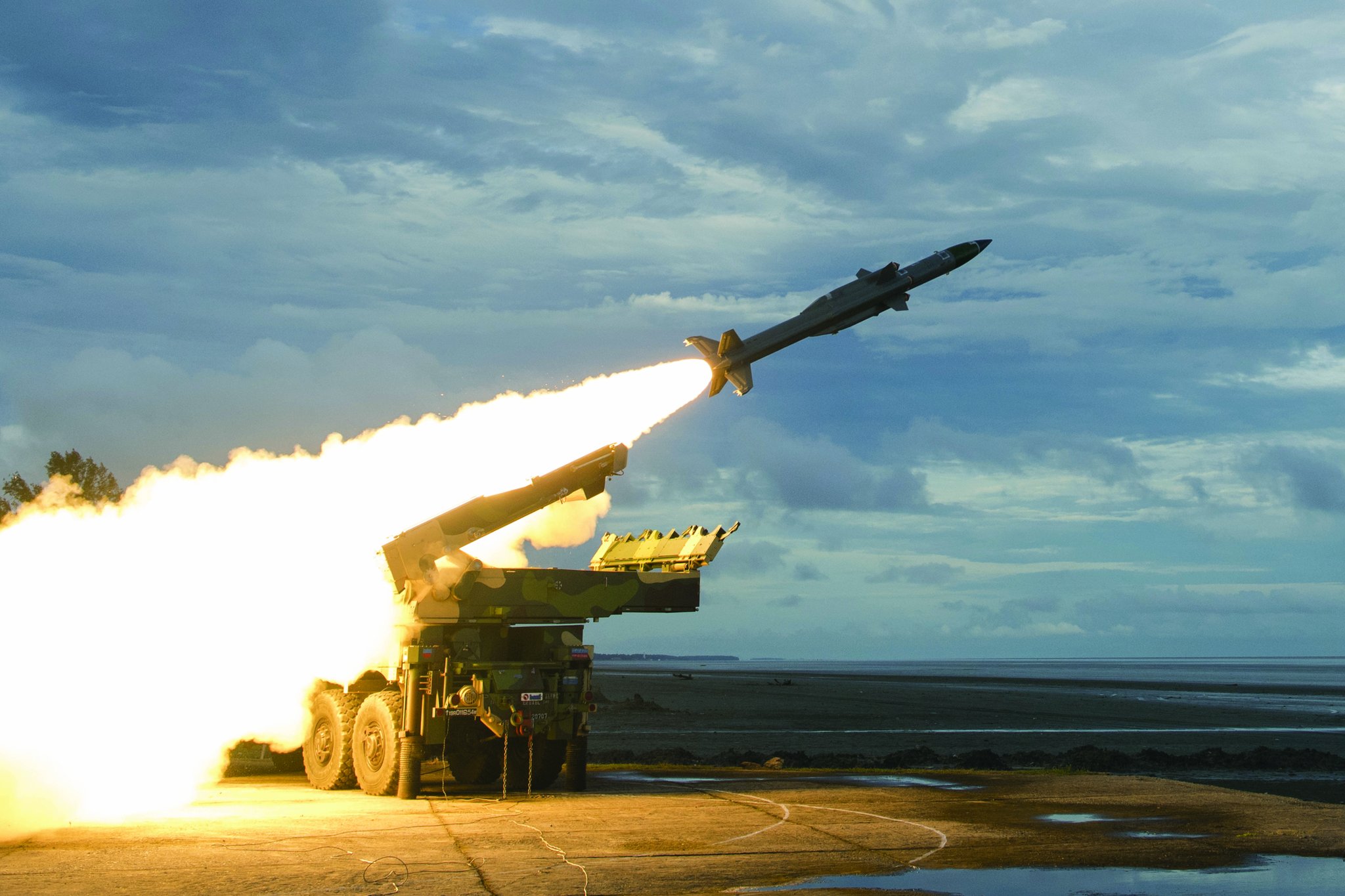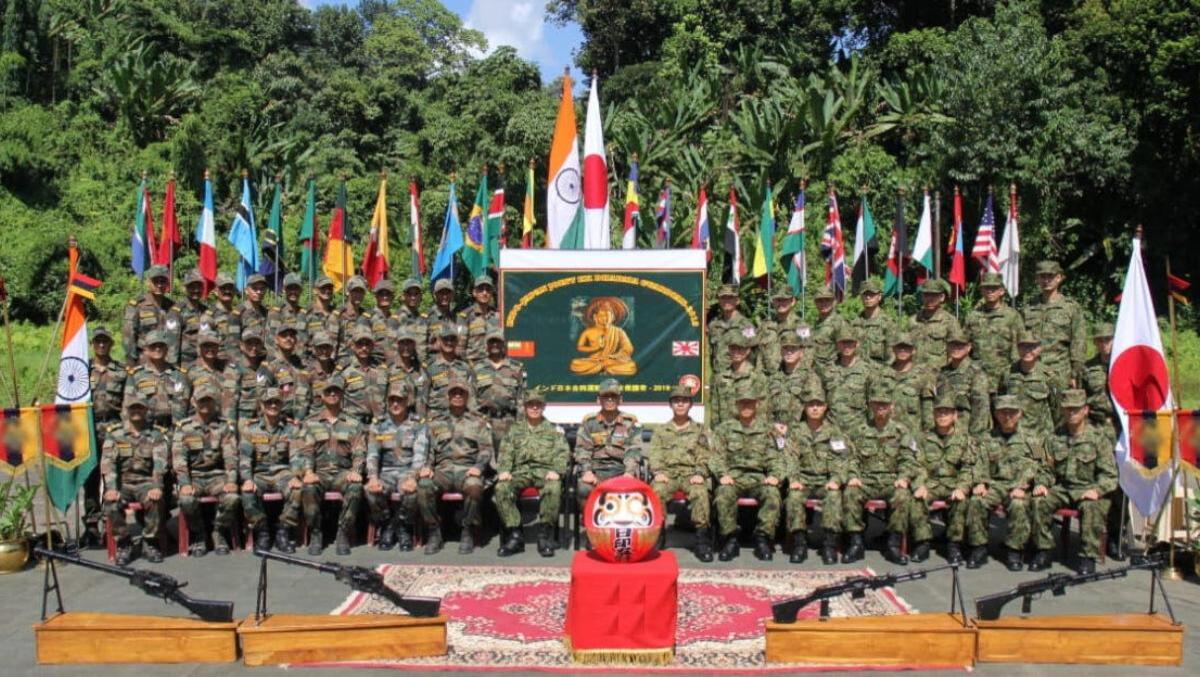Guardians of the Sky: India’s Air Defence Strategy in Modern Warfare
Introduction:
Air defence systems are an essential component of modern military strategy, designed to protect against a wide array of aerial threats such as enemy aircraft, drones, and missiles. In the face of escalating regional tensions, particularly with Pakistan, India has continuously strengthened its air defence capabilities to safeguard its borders, military assets, and civilian infrastructure. The recent thwarting of Pakistani attacks and the targeting of multiple Pakistani air defence systems exemplify India’s rapid response and the effectiveness of its advanced air defence technologies.
In this context, India’s integrated air defence strategy combines both indigenous and imported systems, ensuring a multi-layered and robust defensive architecture capable of neutralising diverse threats at various altitudes and ranges. This article elaborates on the components, operations, and strategic importance of India’s air defence systems.
Air Defence System Operations
The primary purpose of an air defence system is to detect, track, and neutralise hostile aerial threats. Such systems are typically composed of multiple integrated components, each fulfilling a specific role in a layered defensive framework.
Key Operations in Air Defence
- Detection
Detection is the first and most crucial step in air defence. Radars and sometimes satellites are used to scan the skies for incoming threats. These systems emit electromagnetic waves, which bounce off objects like aircraft and return to the radar receiver, providing vital information on the threat's distance, speed, and type. - Tracking
Once a potential threat is detected, it must be continuously tracked. This involves radars and other sensors such as infrared cameras and laser rangefinders to monitor the target's movement in real-time. Effective tracking ensures that air defence systems can manage multiple threats simultaneously, thereby avoiding friendly fire and prioritising threats based on their level of danger. - Interception
Based on the information obtained from detection and tracking, air defence systems launch appropriate countermeasures to neutralise the incoming threats. These countermeasures can vary depending on the type, range, speed, and nature of the threat. Interceptions are generally carried out using fighter aircraft, surface-to-air missiles (SAMs), or anti-aircraft artillery (AAA).
Role of C3 (Command, Control, Communication)
A strong Command, Control, and Communication (C3) system is integral for all three operations—detection, tracking, and interception—to work in tandem. This system ensures quick decision-making, efficient coordination, and effective execution of defence measures. In modern air defence, C3 systems integrate radar, missile batteries, interceptors, and other platforms to function as a cohesive force, capable of responding to threats swiftly and accurately.
Methods of Interception in Air Defence Systems
Air defence interception methods can broadly be classified into the following categories:
- Fighter Aircraft (Interceptors)
Interceptors are used to engage and neutralise enemy aircraft, particularly bombers and fighter jets, before they can launch their attacks.- Capabilities: These aircraft are equipped with missiles, cannons, rockets, and electronic warfare (EW) systems to take down threats.
- Indian Examples: MiG-21 Bison, MiG-29, Su-30MKI, HAL Tejas, and Dassault Rafale.
- Surface-to-Air Missiles (SAMs)
SAMs are the primary weapon in most modern air defence systems.- Long-Range SAMs: Systems like the S-400 Triumf can target threats at distances of hundreds of kilometres.
- Medium-Range SAMs: The Akash and Barak 8 systems are highly mobile, providing rapid response capabilities.
- Short-Range SAMs (MANPADS): Man-portable air defence systems are designed for low-level aerial threats such as drones and helicopters.
- Anti-Aircraft Artillery (AAA)
Although less common today, anti-aircraft guns remain a viable option for targeting low-altitude threats.- These systems fire hundreds of rounds per minute, creating shrapnel fields to damage incoming aircraft, drones, or missiles.
- Electronic Warfare (EW)
EW systems use electronic means to neutralise threats without physical destruction.- Methods: These include radar jamming, missile guidance disruption, and drone spoofing.
- Effectiveness: EW systems can mislead or confuse incoming threats, thereby reducing their effectiveness.
India’s Air Defence Response to Pakistani Attacks
On May 8, 2025, Pakistan launched a coordinated attack, targeting 15 military bases and cities across India using drones and missiles. India’s air defence systems were immediately activated, and the Indian Air Force (IAF) responded with its Integrated Counter-UAS Grid and a range of air defence systems to intercept and neutralise the threats.
Key Air Defence Systems Deployed
- S-400 Triumf: Deployed on the northern border, India has received three squadrons of this advanced long-range system from Russia, providing India with the capability to track and destroy aerial threats at significant distances.
- Barak 8 MRSAM: A medium-range surface-to-air missile system jointly developed by India and Israel, designed to intercept a variety of aerial threats, including aircraft and missiles.
- Akash: India’s indigenous short to medium-range air defence missile system, providing effective protection against a variety of threats, including aircraft, drones, and cruise missiles.
- S-125 Pechora: A legacy Russian air defence system, still in active use, providing defence against a range of aerial threats.
- Electronic Warfare Systems: India deployed advanced electronic warfare systems to jam enemy radars and spoof incoming drones, rendering them ineffective.
The Role of HAROP Loitering Munition in Operation Sindoor
During the May 8th operations, HAROP loitering munitions were reportedly used to target and destroy key Pakistani air defence systems, including one in Lahore. Loitering munitions, often referred to as "suicide drones", are capable of hovering over a target area and striking when the ideal moment arrives.
HAROP Loitering Munition Features
- Equipped with cameras for target selection and can be launched from land or naval platforms.
- It loiters near the target before performing a suicide attack, crashing into its target with a high-explosive payload.
- The endurance can extend to 9 hours, providing a long operational window to identify and engage high-value targets such as air defence systems, radar stations, and military command posts.
- It is immune to GPS jamming, ensuring it remains operational even in highly contested electronic environments.
Conclusion
India’s air defence systems play a crucial role in ensuring the country’s security and sovereignty, especially in the face of evolving aerial threats. The recent interception of Pakistani missile and drone attacks exemplifies the effectiveness of India’s multi-layered air defence strategy. With advanced systems like the S-400 Triumf, Barak 8, and HAROP loitering munitions, India is better prepared to defend itself against potential aerial aggression.
As the region continues to witness technological advancements and geopolitical challenges, India’s focus on modernising its air defence capabilities will remain a top priority to safeguard national interests.
Introduction:
Air defence systems are an essential component of modern military strategy, designed to protect against a wide array of aerial threats such as enemy aircraft, drones, and missiles. In the face of escalating regional tensions, particularly with Pakistan, India has continuously strengthened its air defence capabilities to safeguard its borders, military assets, and civilian infrastructure. The recent thwarting of Pakistani attacks and the targeting of multiple Pakistani air defence systems exemplify India’s rapid response and the effectiveness of its advanced air defence technologies.
In this context, India’s integrated air defence strategy combines both indigenous and imported systems, ensuring a multi-layered and robust defensive architecture capable of neutralising diverse threats at various altitudes and ranges. This article elaborates on the components, operations, and strategic importance of India’s air defence systems.
Air Defence System OperationsThe primary purpose of an air defence system is to detect, track, and neutralise hostile aerial threats. Such systems are typically composed of multiple integrated components, each fulfilling a specific role in a layered defensive framework.
Key Operations in Air Defence
- Detection
Detection is the first and most crucial step in air defence. Radars and sometimes satellites are used to scan the skies for incoming threats. These systems emit electromagnetic waves, which bounce off objects like aircraft and return to the radar receiver, providing vital information on the threat's distance, speed, and type. - Tracking
Once a potential threat is detected, it must be continuously tracked. This involves radars and other sensors such as infrared cameras and laser rangefinders to monitor the target's movement in real-time. Effective tracking ensures that air defence systems can manage multiple threats simultaneously, thereby avoiding friendly fire and prioritising threats based on their level of danger. - Interception
Based on the information obtained from detection and tracking, air defence systems launch appropriate countermeasures to neutralise the incoming threats. These countermeasures can vary depending on the type, range, speed, and nature of the threat. Interceptions are generally carried out using fighter aircraft, surface-to-air missiles (SAMs), or anti-aircraft artillery (AAA).
Role of C3 (Command, Control, Communication)
A strong Command, Control, and Communication (C3) system is integral for all three operations—detection, tracking, and interception—to work in tandem. This system ensures quick decision-making, efficient coordination, and effective execution of defence measures. In modern air defence, C3 systems integrate radar, missile batteries, interceptors, and other platforms to function as a cohesive force, capable of responding to threats swiftly and accurately.
Methods of Interception in Air Defence Systems
Air defence interception methods can broadly be classified into the following categories:
- Fighter Aircraft (Interceptors)
Interceptors are used to engage and neutralise enemy aircraft, particularly bombers and fighter jets, before they can launch their attacks.- Capabilities: These aircraft are equipped with missiles, cannons, rockets, and electronic warfare (EW) systems to take down threats.
- Indian Examples: MiG-21 Bison, MiG-29, Su-30MKI, HAL Tejas, and Dassault Rafale.
- Surface-to-Air Missiles (SAMs)
SAMs are the primary weapon in most modern air defence systems.- Long-Range SAMs: Systems like the S-400 Triumf can target threats at distances of hundreds of kilometres.
- Medium-Range SAMs: The Akash and Barak 8 systems are highly mobile, providing rapid response capabilities.
- Short-Range SAMs (MANPADS): Man-portable air defence systems are designed for low-level aerial threats such as drones and helicopters.
- Anti-Aircraft Artillery (AAA)
Although less common today, anti-aircraft guns remain a viable option for targeting low-altitude threats.- These systems fire hundreds of rounds per minute, creating shrapnel fields to damage incoming aircraft, drones, or missiles.
- Electronic Warfare (EW)
EW systems use electronic means to neutralise threats without physical destruction.- Methods: These include radar jamming, missile guidance disruption, and drone spoofing.
- Effectiveness: EW systems can mislead or confuse incoming threats, thereby reducing their effectiveness.
India’s Air Defence Response to Pakistani Attacks
On May 8, 2025, Pakistan launched a coordinated attack, targeting 15 military bases and cities across India using drones and missiles. India’s air defence systems were immediately activated, and the Indian Air Force (IAF) responded with its Integrated Counter-UAS Grid and a range of air defence systems to intercept and neutralise the threats.
Key Air Defence Systems Deployed
- S-400 Triumf: Deployed on the northern border, India has received three squadrons of this advanced long-range system from Russia, providing India with the capability to track and destroy aerial threats at significant distances.
- Barak 8 MRSAM: A medium-range surface-to-air missile system jointly developed by India and Israel, designed to intercept a variety of aerial threats, including aircraft and missiles.
- Akash: India’s indigenous short to medium-range air defence missile system, providing effective protection against a variety of threats, including aircraft, drones, and cruise missiles.
- S-125 Pechora: A legacy Russian air defence system, still in active use, providing defence against a range of aerial threats.
- Electronic Warfare Systems: India deployed advanced electronic warfare systems to jam enemy radars and spoof incoming drones, rendering them ineffective.
The Role of HAROP Loitering Munition in Operation Sindoor
During the May 8th operations, HAROP loitering munitions were reportedly used to target and destroy key Pakistani air defence systems, including one in Lahore. Loitering munitions, often referred to as "suicide drones", are capable of hovering over a target area and striking when the ideal moment arrives.
HAROP Loitering Munition Features
- Equipped with cameras for target selection and can be launched from land or naval platforms.
- It loiters near the target before performing a suicide attack, crashing into its target with a high-explosive payload.
- The endurance can extend to 9 hours, providing a long operational window to identify and engage high-value targets such as air defence systems, radar stations, and military command posts.
- It is immune to GPS jamming, ensuring it remains operational even in highly contested electronic environments.
Conclusion
India’s air defence systems play a crucial role in ensuring the country’s security and sovereignty, especially in the face of evolving aerial threats. The recent interception of Pakistani missile and drone attacks exemplifies the effectiveness of India’s multi-layered air defence strategy. With advanced systems like the S-400 Triumf, Barak 8, and HAROP loitering munitions, India is better prepared to defend itself against potential aerial aggression.
As the region continues to witness technological advancements and geopolitical challenges, India’s focus on modernising its air defence capabilities will remain a top priority to safeguard national interests.




Comments (0)